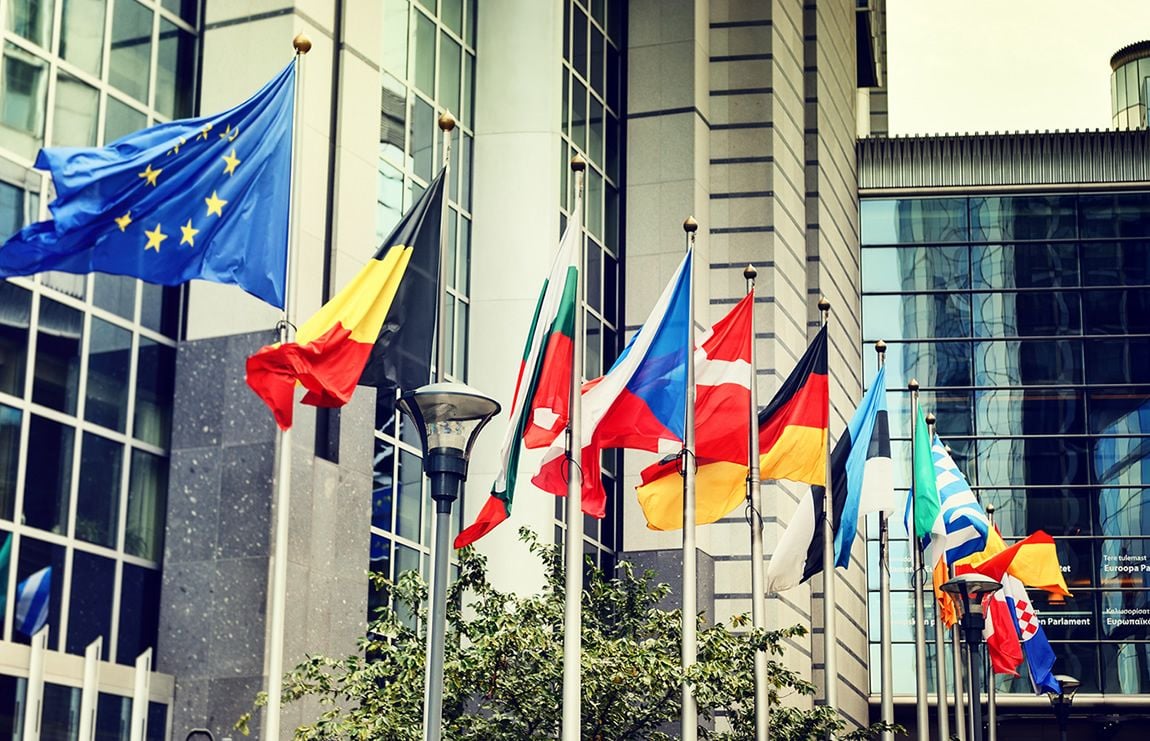Eurozone Recovery Began in May, PMI Surveys Show, but It's a Long Road Back into the Black
- Written by: James Skinner
-

© Grecaud Paul, Adobe Stock
- EUR/USD spot at time of writing: 1.0971
- Bank transfer rates (indicative): 1.0554-1.0631
- FX specialist rates (indicative): 1.0773-1.0839 >> More information
The Eurozone economic recovery began in May with the gradual easing of 'lockdown' restrictions, IHS Markit surveys of purchasing managers in the manufacturing and services sectors suggested on Thursday, although the speed at which economies return to normal levels of output remains uncertain.
Europe's services and manufacturing industries both saw conditions improve substantially during May but it was widely shuttered services sector that saw the greatest the rebound, according to IHS Markit PMI indices.
The Eurozone services PMI more than doubled when it rose to 28.7 this month, from an upwardly-revised but still historic April low of 12.0. Manufacturers saw a lesser rebound, with that index for that sector rising from 33.4 to 39.5 for the bloc as a whole. The composite PMI rose to 30.5 from 13.6 in April, with most of the constituent barometers having beaten market expectations.
This followed sharp gains in Germany and France and an easing of 'lockdown' restrictions, but the French recovery was stronger because of the more draconian measures used to contain the virus that hobbled the global economy in March and April. France's services PMI nearly tripled from 10.2 to 29.4.
"The German economy is still reeling from the Covid-19 inspired lockdowns, but the direction of travel is now positive," says Claus Vistesen, chief Eurozone economist at Pantheon Macroeconomics. "Conditions are still very difficult, but the rate of contraction is now easing from a free-fall in April as lockdowns were imposed. Meanwhile in the labour market, we continue to see evidence that the sharp contraction in employment to some extent is being cushioned."
Thursday's PMI surveys are not official data but do provide a strong indication that Europe's economic recovery began this month however, the rebound is still in its very early stages that have merely seen the economy contracting at a lesser pace than was the case in April. In other words the benchmarks imply both a fledgling economic recovery as well as that Eurozone GDP was still falling in May albeit at a lesser pace.
PMI surveys measure changes in industry activity by asking respondents to rate conditions for new orders, production, hiring intentions, prices and inventories. A number above 50.0 indicates industry expansion while a number below 50 is suggestive of contraction. The survey results often correlate with official measures of output, although they can often be wide of the mark too.
"The Eurozone PMI increased improved significantly in May but remained below 50 which signals contraction in activity. This means that fewer companies indicated declining output, but that the contraction continued nevertheless. The increase in PMI was even somewhat better than expected, but at the same time it is a smaller bounce back than what the Chinese economy experienced in March," says Bert Colijn, an economist at ING. "People hoping for a v-shaped recovery should go back to the alphabet and pick another letter."
Eurozone GDP fell -3.8% quarter-on-quarter in the three months to the end of March, the largest decline since before the launch of the single currency and marking the beginning of a historic recession. German GDP fell -2.2%, French GDP fell -5.8% and Spanish GDP was down -5.2%. Italian GDP fell by -4.7%, making a third consecutive quarter of negative growth.
Economists widely expect second-quarter data to reveal even steeper falls, with the quarterly GDP numbers unlikely to turn positive until the June-to-September period while the 2020 year overall is expected to see output from some European economies decline by double-digit percentages. However, and technically, the recovery began when the pace of economic contraction slowed and this is what the PMI surveys are expected to continue illustrating.
"Today's readings were largely in line with consensus, though consensus itself spanned close to 50 index points from the lowest to the highest calls in a Reuters poll. China’s first PMI readings following the gradual re-opening also remained below 50, partly guiding expectations. The coming months should see very high PMIs," say Anders Svendsen, an economist at Nordea Markets.
Eurozone finance ministers have put together a €540 bn package of support measures including loans guaranteed by European institutions in the hope of minimising the long-term damage caused to the economy by the coronavirus. Germany and France agreed Monday on a recovery fund proposal that will finance grants instead of loans to the weaker and more vulnerable member states, some of whom have been hit the hardest by the virus.
The European Central Bank (ECB) has increased the size of its original quantitative easing programme by €120bn and launched a pandemic-emergency-purchase-programme that commits it to buy €750bn of government and corporate bonds, which will force down borrowing costs and could help ensure governments retain access to finance even in the event that bond investors eschew debts of the most indebted.




